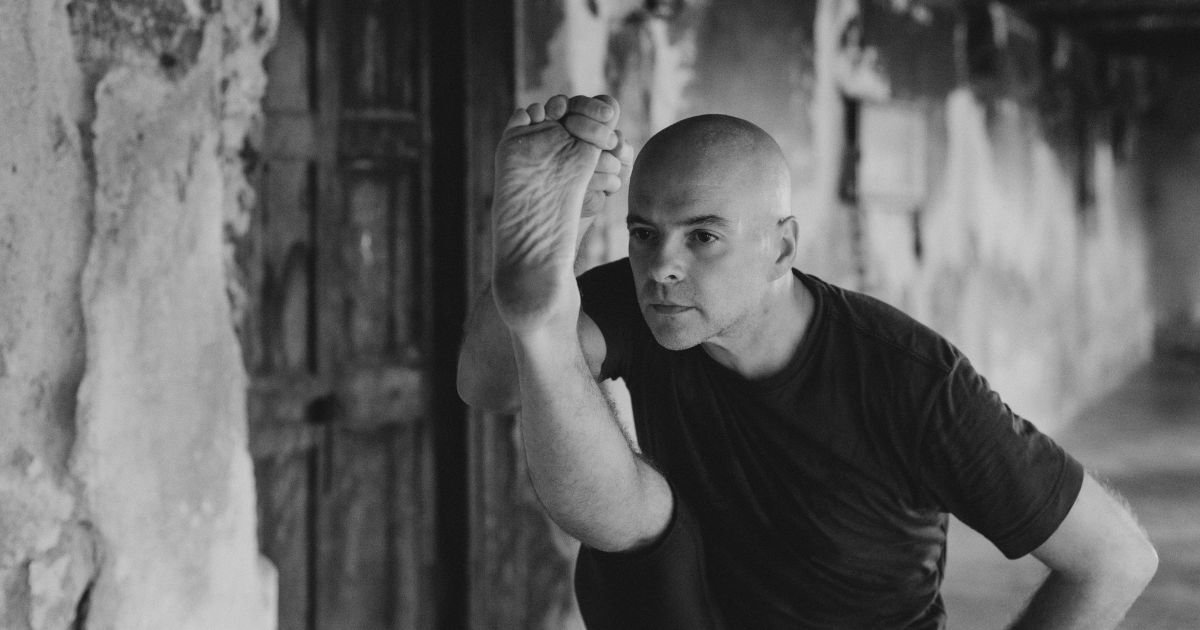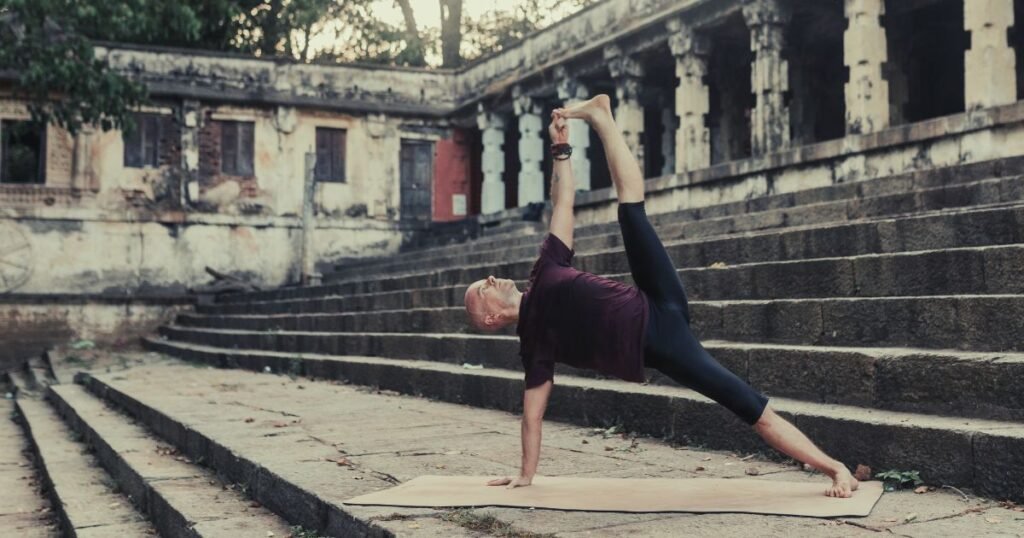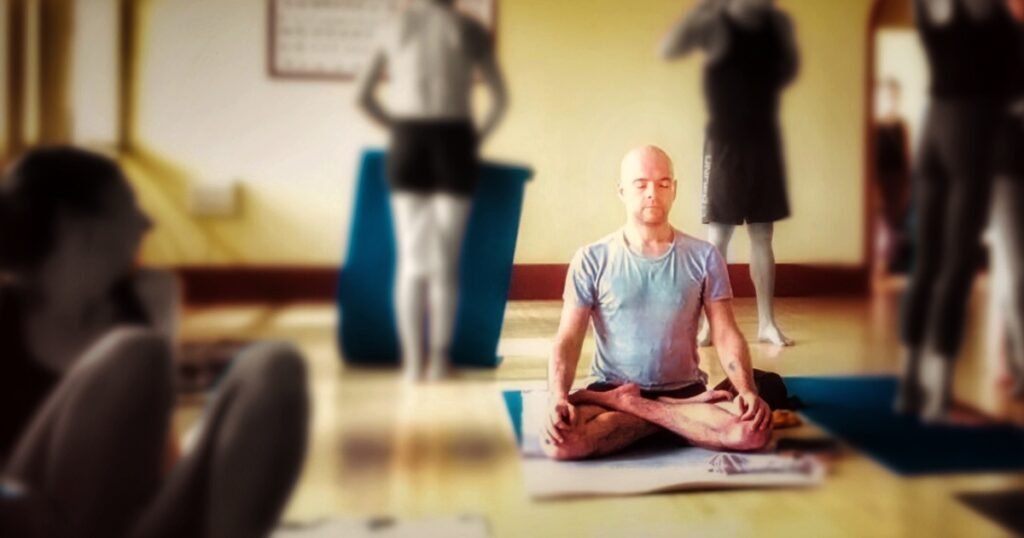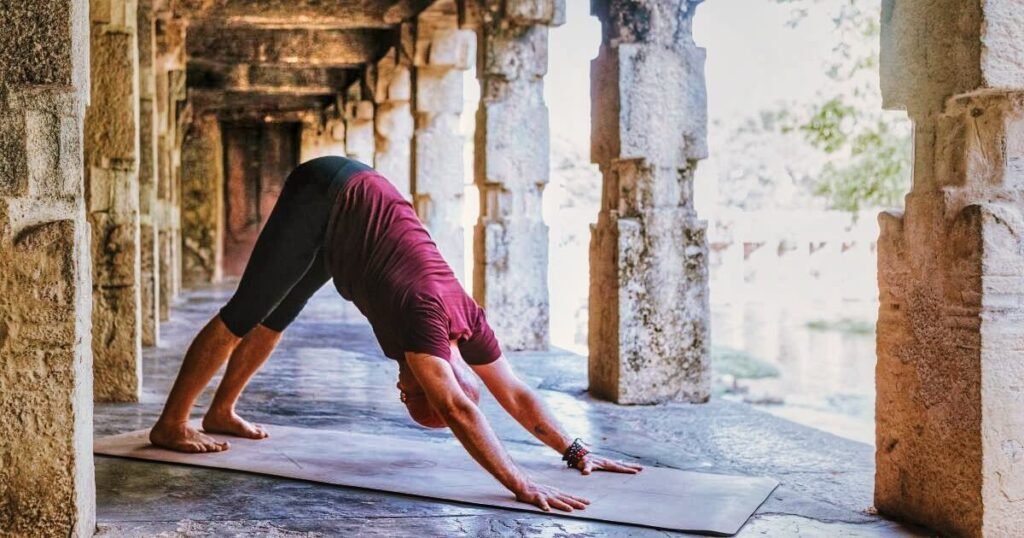Each asana is a door. Some open towards the body, others towards the mind.
Each posture speaks to me in a different way. Sometimes it challenges me, other times it soothes me.
When There Is Disorder Within, You Can’t Stand Steady Outside.
I’m about to fall. My standing foot trembles, the lifted leg seems to lose strength. The knee wavers, the big toe slips between my fingers. I try to pull myself together, but the body doesn’t respond: it wobbles, the hip locks up, stiffens. The breath breaks. The mind screams “Hold on!”, but the body replies with instability.
And now, to make things worse, I move my right leg out to the side while my gaze turns in the opposite direction. My sense of balance seems to crumble even more. It’s as if every part of the body is pulling in a different direction. For a moment, I feel small. Ridiculous, even. As if my entire sense of equilibrium depended on this asana, on this single fragment of yoga practice.
And yet, it had started like any other day. A regular morning in the shala. The usual deep breaths, the body unfolding in a slow inner dance with a familiar rhythm. The illusion of having everything under control. Then comes Utthita Hasta Padangusthasana, and something shifts.
On the outside, it’s just a lifted leg, an extended arm, a steady gaze. But inside, there’s a subtle battle. In that exact moment, the mind wants one thing, the body does another.
The first reaction is always the same. In an attempt to manage it all, I grip, contract, hold on. I want to control the leg, I want to control the balance, I want to control the mind. But there’s a point where insistence turns into tension, and tension becomes collapse. So I let go. I lower down. I inhale.
A conversation pops up in my mind from a few days ago, outside the shala. Someone dear to me, who was going through a moment of confusion, said:
“Everything is slipping through my fingers. I don’t know what to hold on to anymore.”
And I replied:
“Maybe you don’t need to hold on to anything outside. Maybe you need to return within.”
And now, standing there again, with my big toe caught between my fingers and my mind struggling, that phrase echoes inside me. The leg doesn’t extend on its own but is called forth by that invisible core, that deep root within the belly and back that supports every movement. Without that call, the leg is just a dangling weight—and I’m already lost.
I stop forcing. I loosen my grip on the foot.
I return to the breath. I listen to myself.
Everything pauses for a moment.
I realise the balance I was seeking was not in strength, but in listening.
Not in standing tall, but in returning to myself, to my centre.
That inner space that does not tremble even when everything outside is unstable.
I breathe, and the asana comes to life. Not perfect, not proud, not “Instagrammable.” But real.
Because now I am here. Rooted. Present. The foot presses down, the body opens, the mind is silent.
And inside, something stabilises. Not because I have won, but because I have stopped fighting.
There are days when everything feels unstable, inside and out.
And we fool ourselves into thinking that by fixing things outside, we will find peace.
This is the lesson this posture offers me today: stability is never about superficial control.
It is a return to that place within us where we can always find refuge, especially when everything feels off balance.
And in life, as in yoga, this centre is our true strength.
Where do you go when you feel like you’re about to fall?
Om shanti, shanti, shanti.
‘Be Flexible in Mind, Strong in Heart‘




